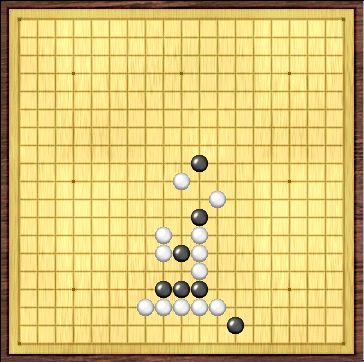

This is the same as Pente. To win you must get five of your stones in a row in any direction. If you place a stone so it sandwiches two opponent stones with another of your stones, the two opponent stones are captured. If you capture five pairs of your opponent’s stones, you also win. In the tournament version, white begins with a stone in the center and black moves next. White’s next stone must not be placed on the two nearest intersections from the center stone. This is the only difference from the standard rules.
In 1899, Go-Moku players began experimenting with new restrictions designed to lessen the first player’s advantage and a new name Renju (“String of Pearls”) was given to the game by Chinese poetry expert, Tenry Kobayashi. The first Renju federation was established in 1906 and experiments with the rules continued for the next 60 years. The Ninuki-Renju variant was popular in Japan from 1900-1940 and had its own organization, Ninuki-Renju Sha, from 1923-1940. In the U.S. it was marketed as Pente, with slightly different rules, beginning in the late 1970’s. The main difference between Ninuku and Pente is that the latter allows overlines, that is, more than five stones in a row.
Watch carefully for possibilities (for all sides) to capture pairs of opposing stones. Try to combine threats to capture your opponent’s stones with normal Go-Moku threats such as 4-in-a-rows.
☛ You can download my free Z-Pente program here, but you must own the software Zillions of Games to be able to run it.
© Mats Winther 2006